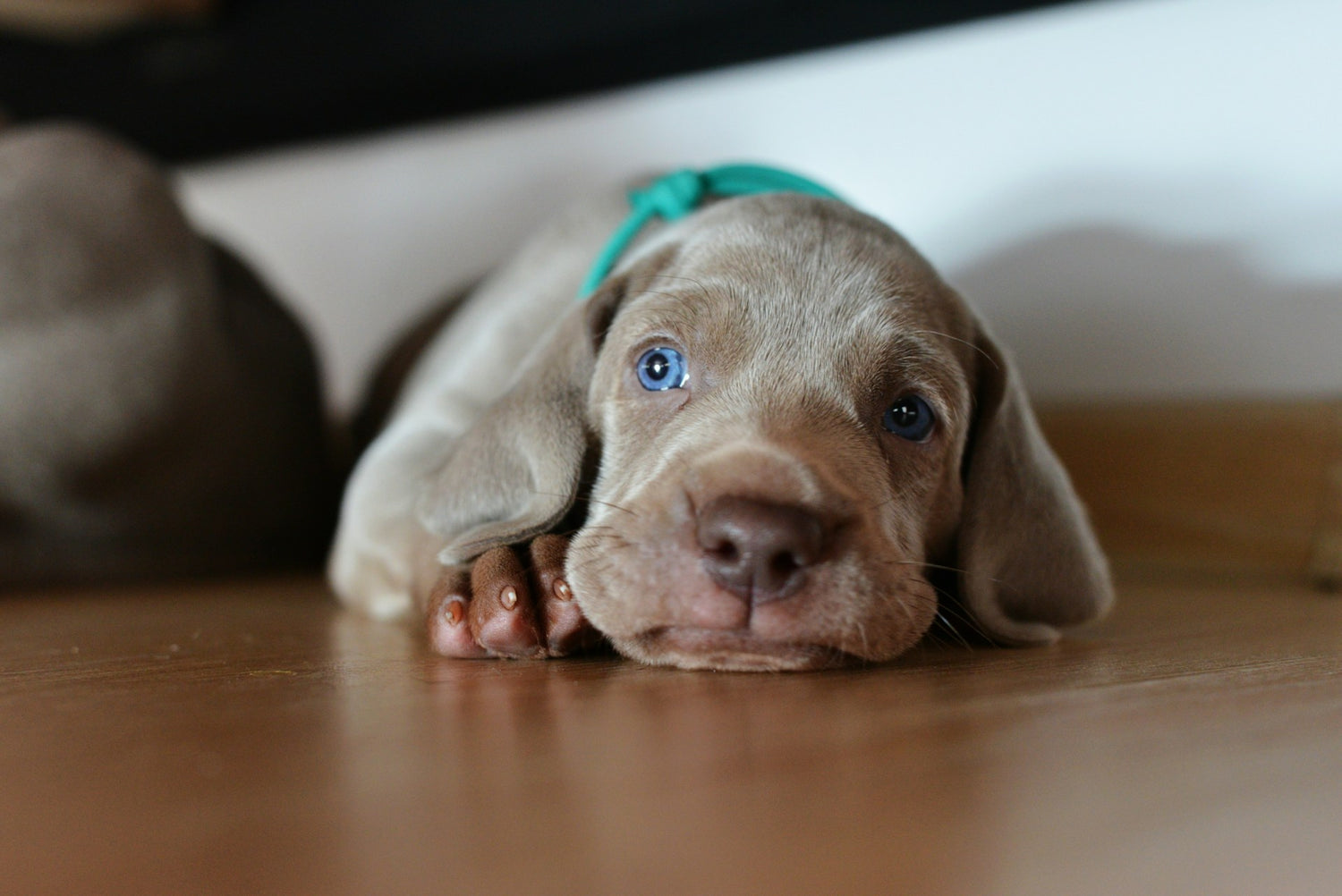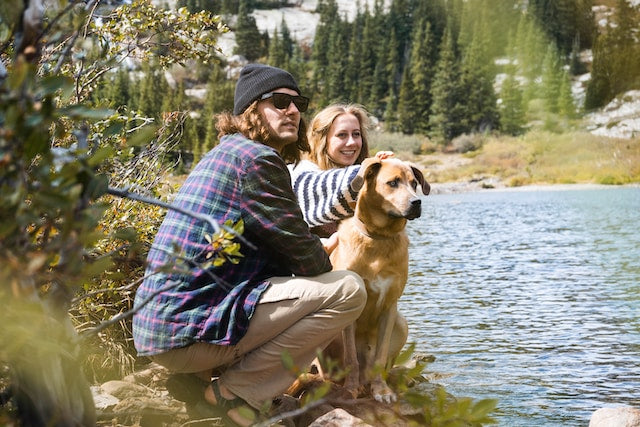Navigating the challenges of separation anxiety in dogs is a journey familiar to many pet owners. This behavioural issue disrupts not only the peace of our four-legged friends but also the tranquillity of our homes. As advocates for pet wellness, Pupps is dedicated to natural solutions and a community-driven ethos. In this comprehensive guide, we aim to alleviate the stress of separation anxiety.
In this exploration, we'll delve into the roots of separation anxiety, its manifestations, and its profound impact on our canine companions. We'll provide insights into recognising the signs of distress and offer a roadmap to a calmer existence for your dog. From professional interventions to daily management techniques, our guide promotes a holistic approach to creating a secure and nurturing environment for your pet.
Among various solutions, we spotlight Pupps' Calming Dog Treats, a testament to our commitment to natural, health-focused remedies. Designed to soothe and comfort, these treats support your journey towards a balanced life with your pet.
Join us on this journey, guiding you through the complexities of separation anxiety towards a future filled with joy and contentment.
Understanding the Roots of Separation Anxiety in Dogs:
Separation anxiety in dogs is a complex tapestry of emotional and behavioural patterns, deeply embedded in a dog's psyche. This distress stems from a profound sense of discomfort and unease when separated from their human counterparts.
The Pack Mentality: A Double-Edged Sword
Dogs are pack animals, craving companionship and the presence of their pack members. This instinct, while fostering strong bonds, can lead to anxiety. When a dog perceives its pack (you, the owner) is leaving, it may feel abandoned, triggering stress responses.
Signs and Signals: Interpreting Your Dog's Behaviour
Recognising the signs of separation anxiety is crucial. It often manifests in various behaviours, some subtle and others pronounced:
- Destructive Behaviour: Dogs may chew or destroy belongings not out of mischief, but as a manifestation of underlying stress.
- Excessive Vocalisation: Persistent barking, howling, or whining when left alone signals their distress.
- Pacing or Restlessness: Repetitive movements or an inability to settle may indicate discomfort with solitude.
Understanding these signs equips us to address our dog's needs empathetically and effectively.
Pupps' Approach: A Natural Companion in Times of Stress
In times of turmoil, Pupps stands as a beacon of relief and comfort. Our Calming Dog Treats are crafted to soothe and calm your beloved pet. With calming ingredients, these treats aid in easing your dog’s anxiety gently.
As we explore separation anxiety further, we also look at comprehensive approaches to manage and alleviate this condition, prioritising the welfare and happiness of our furry friends.
Treating Separation Anxiety: Professional Insights and Home-Based Interventions
Addressing separation anxiety requires a multifaceted approach. A blend of professional guidance and home-based care can effectively manage and eventually overcome this condition.
Professional Insights: When to Seek Help
For severe or destructive behaviours, seek professional advice. A veterinarian or a certified animal behaviourist can offer insights and suggest behavioural therapy or medication, always under strict veterinary supervision.
Home-Based Interventions: Creating a Calm Environment
Your home plays a crucial role in managing your dog's anxiety. Simple strategies can make a significant difference:
- Establish a Safe Space: Designate a comfortable area where your dog feels secure, like a quiet corner with their favourite bed or a crate.
- Routine is Key: Dogs thrive on routine. Maintain regular feeding times, walks, and quiet times for stability.
- Departure Cues: Desensitise your dog to departure cues, like picking up keys or putting on a coat, by performing these actions without leaving.
- Interactive Toys: Keep your dog engaged with puzzle toys or treat-dispensing toys when alone.
Pupps' Calming Treats, infused with naturally calming ingredients, are designed to provide a soothing effect during separation, making the process less stressful for your dog.
Natural Ingredients:
Each treat contains ingredients known for their calming properties, helping to ease your dog's anxiety in a gentle, holistic way.
Ease of Use:
Integrating these treats into your dog's routine is effortless. Use them as a reward for calm behaviour or as a comforting snack before anticipated separation periods.
Managing Day-to-Day: Practical Tips for Dog Owners
Managing separation anxiety involves daily routines and understanding the underlying causes. Establishing a routine and environment that eases your dog's stress can be incredibly effective. Here are practical tips for managing your pet's separation anxiety:
Routine and Consistency:
Establish a consistent routine for activities like feeding, walks, and quiet time.
Regular Exercise:
Helps expend excess energy and induces calmness.
Calm Departures and Arrivals:
Minimise the fuss when you leave or return home to avoid triggering anxiety.
Engaging Their Mind:
Provide mental stimulation with puzzle toys or treat-dispensing toys and consider calming background noise like a radio or television.
The Pupps Solution: Calming Treats as Part of the Routine
Integrating Pupps' Calming Dog Treats into your dog's daily routine can provide comfort and tranquillity. Use these treats before departures or as a reward for calm behaviour, reinforcing a peaceful environment.
Building Confidence: Gradual Desensitisation
Gradual desensitisation can help your dog become more independent:
Short Absences:
Start by leaving your dog alone for short periods and gradually increase the time.
Safe Space:
Encourage your dog to spend time in their safe space even when you're home.
Preventing Separation Anxiety: Building a Secure Environment
Creating a nurturing environment from the early stages can prevent separation anxiety:
Early Socialisation and Training:
Introduce your puppy or new dog to diverse experiences and settings.
Gradual Introduction to Being Alone:
Start with short departures and use special toys or Pupps' Calming Treats to create positive associations with your absence.
Consistent and Calm Routine:
Maintain a predictable routine and spend quality, calm time with your dog when you return home.
Conclusion: Empowerment Through Understanding and Care
Understanding and addressing separation anxiety is a journey of empathy, patience, and care. By recognising the signs and employing strategic interventions, such as Pupps' Calming Treats, you can create a nurturing environment that addresses the roots of anxiety. Together with Pupps, we can ensure a serene and joyful life, filled with tail wags and contentment.




Leave a comment
This site is protected by hCaptcha and the hCaptcha Privacy Policy and Terms of Service apply.